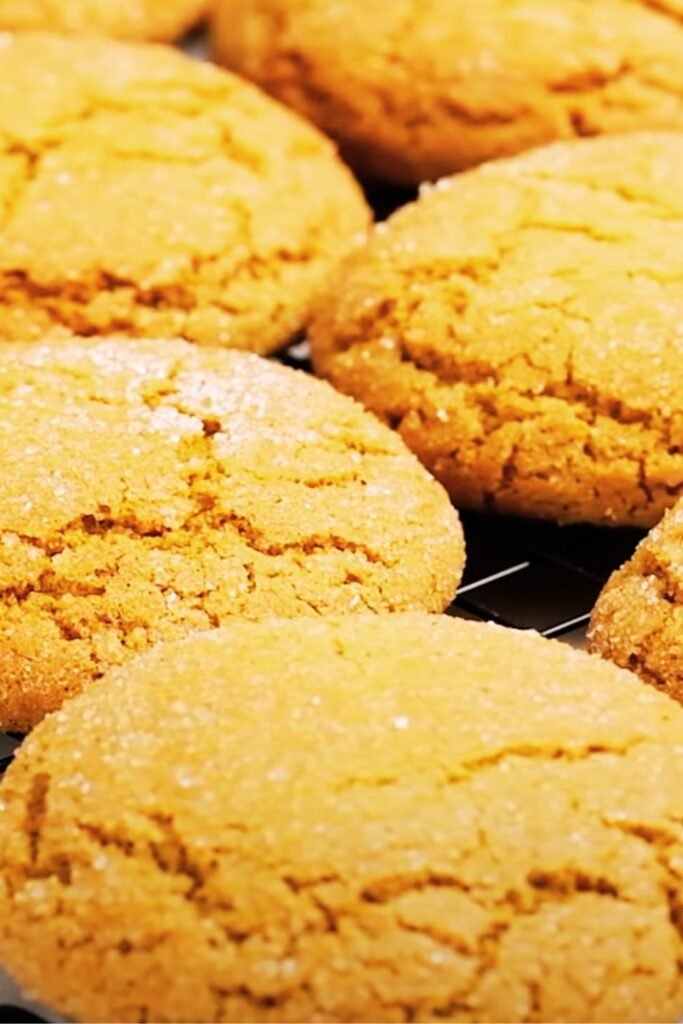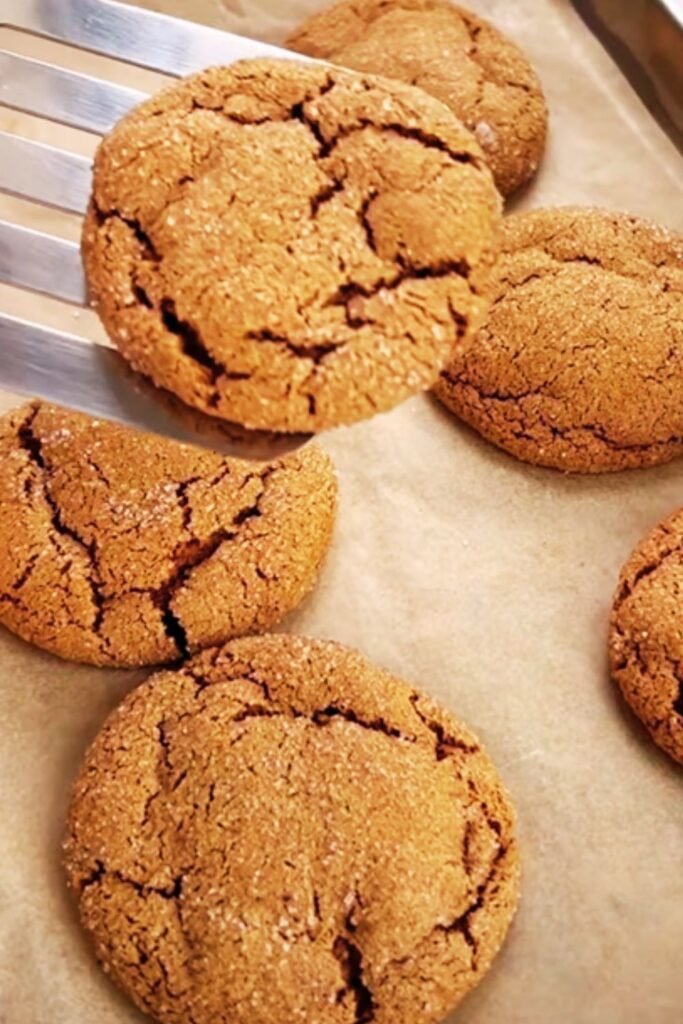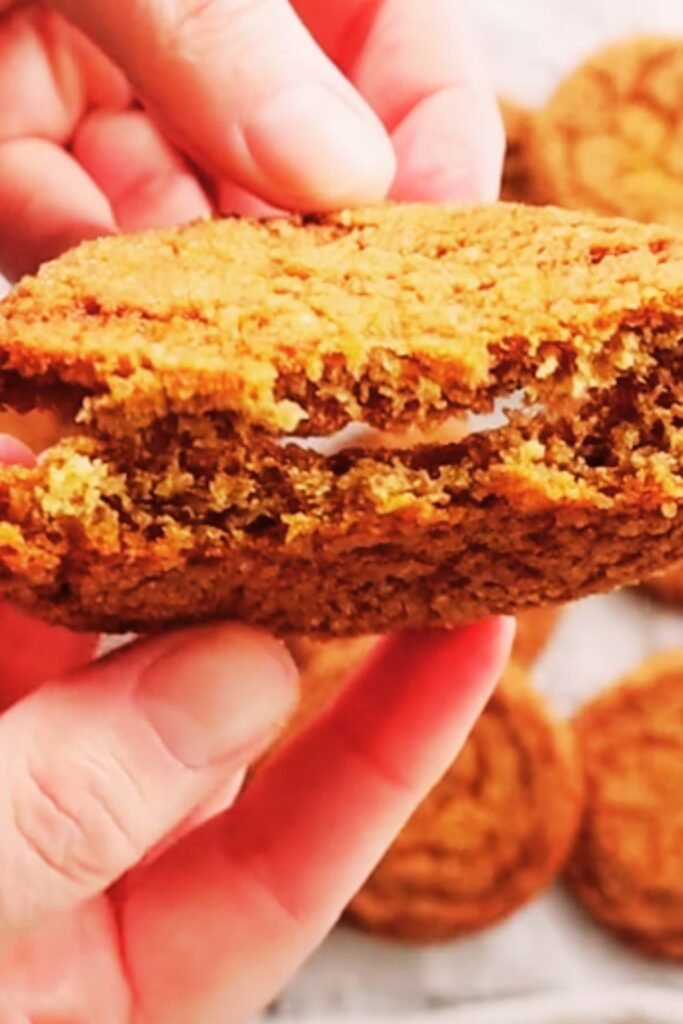When I first discovered matcha crinkle cookies, I knew I’d stumbled upon something truly special. These beautiful green gems combine the sophisticated, earthy flavor of ceremonial-grade matcha with the beloved texture of classic crinkle cookies. The result? A treat that’s both visually stunning and absolutely delicious.
The magic happens when these cookies bake – they develop those signature crackled surfaces that reveal a beautiful contrast between the deep green interior and the snowy white powdered sugar coating. I’ve perfected this recipe through countless batches, and I’m excited to share every secret with you.
Understanding Matcha: The Star Ingredient
Matcha: Finely ground powder made from specially grown and processed green tea leaves, prized for its vibrant color and complex flavor profile.
Ceremonial Grade: The highest quality matcha, made from the youngest tea leaves, offering the smoothest taste and most vibrant color.
Culinary Grade: A more affordable option suitable for baking, with a slightly more robust flavor that holds up well in recipes.
Umami: The fifth taste sensation, present in quality matcha, adding depth and complexity to sweet applications.
The quality of your matcha directly impacts your cookies’ final taste and appearance. I always recommend investing in at least culinary-grade matcha from reputable sources. The difference between cheap matcha powder and quality matcha is night and day – quality matcha provides that beautiful jade color and complex flavor that makes these cookies truly exceptional.
Essential Ingredients Breakdown
Let me walk you through each component and why it matters for perfect matcha crinkle cookies:
Core Cookie Components
All-Purpose Flour: Forms the cookie’s structure. I use unbleached flour for the best flavor, though bleached works perfectly fine.
Matcha Powder: The star of our show. You’ll need 2-3 tablespoons for optimal flavor and color without overwhelming bitterness.
Baking Powder: Creates the lift and crackled texture that defines crinkle cookies.
Salt: Enhances all flavors and balances the matcha’s natural bitterness.
Butter: Use unsalted butter at room temperature for proper creaming and flavor control.
Granulated Sugar: Provides sweetness and helps create the cookie’s tender texture.
Brown Sugar: Adds moisture and depth of flavor with its molasses content.
Eggs: Bind ingredients and add richness. Room temperature eggs incorporate better.
Vanilla Extract: Complements matcha’s earthiness without competing with it.
Coating Essentials
Powdered Sugar: Creates the signature white crackled appearance. Don’t skip this step – it’s what makes crinkle cookies visually distinctive.

Step-by-Step Recipe Instructions
Preparation Phase
First, I always start by setting up my workspace properly. Preheat your oven to 350°F (175°C) and line two large baking sheets with parchment paper. This temperature works perfectly for achieving that ideal balance between a set exterior and chewy interior.
Sift your matcha powder – this step is crucial. Matcha can be quite clumpy, and sifting ensures even distribution throughout your dough. I use a fine-mesh strainer and gently tap it to break up any stubborn clumps.
Mixing the Dough
In a medium bowl, whisk together 2¼ cups all-purpose flour, 3 tablespoons sifted matcha powder, 2 teaspoons baking powder, and ½ teaspoon salt. Set this dry mixture aside.
In your stand mixer bowl (or large mixing bowl if using a hand mixer), cream together ½ cup softened unsalted butter, ¾ cup granulated sugar, and ¼ cup packed brown sugar. Beat on medium speed for about 3 minutes until the mixture becomes light and fluffy. This creaming process is essential for creating the right texture.
Add 1 large egg and 1 teaspoon vanilla extract to the butter mixture. Beat until well combined, scraping down the bowl sides as needed.
Gradually add the flour mixture to the wet ingredients, mixing on low speed until just combined. Don’t overmix – this can lead to tough cookies.
Shaping and Coating
The dough will be soft but manageable. If it feels too sticky, refrigerate for 30 minutes. This makes shaping much easier and prevents the cookies from spreading too much during baking.
Place about 1 cup of powdered sugar in a shallow bowl. Using a cookie scoop or spoons, portion the dough into balls about 1½ inches in diameter. Roll each ball in the powdered sugar, ensuring complete coverage. This coating creates those beautiful white cracks as the cookies expand during baking.
Place the coated dough balls on your prepared baking sheets, spacing them about 2 inches apart. They’ll spread during baking, so adequate spacing prevents them from merging together.
Baking Process
Bake for 10-12 minutes, rotating the pans halfway through for even browning. The cookies are done when the edges are set and the tops have developed those characteristic cracks. The centers might look slightly underdone – that’s perfect. They’ll continue cooking on the hot pan after removal.
Let the cookies cool on the baking sheets for 5 minutes before transferring to a wire rack. This brief cooling period prevents them from breaking apart while still warm and fragile.

Nutritional Information and Serving Details
| Nutritional Component | Per Cookie (Makes 24) | Daily Value % |
|---|---|---|
| Calories | 145 | 7% |
| Total Fat | 4.2g | 6% |
| Saturated Fat | 2.6g | 13% |
| Cholesterol | 18mg | 6% |
| Sodium | 85mg | 4% |
| Total Carbohydrates | 26g | 10% |
| Dietary Fiber | 0.8g | 3% |
| Sugars | 16g | – |
| Protein | 2.4g | 5% |
| Caffeine | 8mg | – |
| Antioxidants (EGCG) | 12mg | – |
Troubleshooting Common Issues
Cookies Spreading Too Much
Problem: Cookies lose their shape and become thin and crispy.
Solution: Chill your dough for at least 30 minutes before baking. Also, ensure your butter wasn’t too warm when mixing.
Insufficient Cracking
Problem: The signature crinkled surface doesn’t develop properly.
Solution: Make sure you’re using enough powdered sugar coating and that your baking powder is fresh. Old baking powder loses its effectiveness.
Bitter Taste
Problem: The matcha flavor is too intense or bitter.
Solution: Reduce matcha to 2 tablespoons and ensure you’re using culinary-grade rather than ceremonial-grade matcha for baking.
Color Too Pale
Problem: The cookies don’t have that vibrant green color.
Solution: Increase your matcha quantity slightly or check that your matcha powder is fresh and high-quality.
Storage and Serving Recommendations
Proper Storage Methods
Store your matcha crinkle cookies in an airtight container at room temperature for up to one week. Layer them between parchment paper to prevent sticking. For longer storage, freeze the baked cookies for up to three months.
You can also freeze the unbaked, shaped, and sugar-coated dough balls. Place them on a baking sheet until frozen solid, then transfer to freezer bags. Bake directly from frozen, adding 1-2 extra minutes to the baking time.
Serving Suggestions
These cookies pair beautifully with:
- Hot green tea or jasmine tea for an authentic Japanese experience
- Cold milk for a classic American treat
- Vanilla ice cream for an elegant dessert
- Fresh berries and whipped cream for special occasions
- Hot chocolate during winter months
- Iced coffee for an afternoon pick-me-up

Recipe Variations and Customizations
White Chocolate Matcha Crinkles
Add ½ cup white chocolate chips to the dough for extra indulgence. The sweetness balances matcha’s earthiness beautifully.
Matcha Almond Crinkles
Replace vanilla extract with almond extract and add ¼ cup sliced almonds for a nutty variation.
Double-Coated Crinkles
Roll cookies first in granulated sugar, then in powdered sugar for extra texture and sweetness.
Mini Matcha Crinkles
Make smaller 1-inch balls for bite-sized treats perfect for parties or gift-giving.
The Science Behind Perfect Crinkle Cookies
Understanding why these cookies work helps you achieve consistent results. The combination of baking powder and the contrast between the soft interior and sugar coating creates the crinkled effect. As the cookies bake, the interior expands while the sugar coating remains relatively static, causing those beautiful surface cracks.
The butter and sugar creaming process incorporates air, creating a tender texture. The slight underbaking ensures the centers stay chewy while the edges set properly. Temperature control is crucial – too hot, and the cookies spread too quickly; too cool, and they won’t develop proper texture.
Seasonal Adaptations
Spring Version
Add lemon zest for a bright, fresh flavor that complements matcha’s earthiness.
Summer Variation
Incorporate freeze-dried strawberries, crushed into small pieces, for a fruity twist.
Fall Adaptation
Add a pinch of cinnamon and nutmeg for warming spices that enhance matcha’s complexity.
Winter Special
Include a touch of peppermint extract for a festive holiday variation.
Gift-Giving and Presentation Ideas
These cookies make exceptional gifts due to their unique appearance and sophisticated flavor. Package them in clear cellophane bags tied with ribbon, or arrange them in decorative tins. For special occasions, consider creating a matcha-themed gift basket including the cookies, quality matcha powder, and a traditional bamboo whisk.
The visual appeal of these cookies makes them perfect for bake sales, potluck dinners, and holiday cookie exchanges. Their exotic flavor often makes them conversation starters at gatherings.
Frequently Asked Questions
Q. Can I use matcha tea bags instead of powder?
No, matcha tea bags contain different processing and won’t provide the intense flavor or color needed for baking. Always use actual matcha powder.
Q. Why do my cookies taste bitter?
Bitterness usually indicates too much matcha powder or low-quality matcha. Try reducing the amount to 2 tablespoons and ensure you’re using culinary-grade matcha.
Q. Can I make these cookies gluten-free?
Yes, substitute the all-purpose flour with a 1:1 gluten-free flour blend. The texture may be slightly different, but they’ll still be delicious.
Q. How do I know when the cookies are properly done?
The edges should be set, and the tops should have visible cracks. The centers may look slightly underdone – this ensures they stay chewy.
Q. Can I reduce the sugar content?
You can reduce the granulated sugar by up to ¼ cup, but don’t eliminate the powdered sugar coating as it’s essential for the crinkled appearance.
Q. What’s the best way to measure matcha powder?
Always sift matcha first, then measure. This ensures accuracy and prevents clumping in your dough.
Q. Can I double this recipe?
Absolutely! This recipe doubles well. Just ensure you have adequate oven space and baking sheets for the larger batch.
Q. Why didn’t my cookies crack properly?
Common causes include old baking powder, insufficient powdered sugar coating, or dough that’s too cold. Ensure your baking powder is fresh and coat the dough balls generously.
Q. How long do these cookies stay fresh?
Properly stored in an airtight container, they maintain optimal freshness for about a week at room temperature.
Q. Can I freeze the baked cookies?
Yes, these cookies freeze excellently for up to three months. Thaw at room temperature for best texture.
These matcha crinkle cookies represent the perfect marriage of Eastern sophistication and Western comfort food traditions. The unique flavor profile appeals to adventurous palates while remaining accessible to those new to matcha. Every batch I make reminds me why I fell in love with this recipe – the beautiful appearance, complex flavor, and satisfying texture create an unforgettable cookie experience.
Whether you’re exploring Japanese flavors for the first time or you’re a seasoned matcha enthusiast, these cookies deliver on both visual appeal and taste. The recipe’s reliability means you can confidently serve them to guests or give them as gifts, knowing they’ll consistently turn out beautifully.